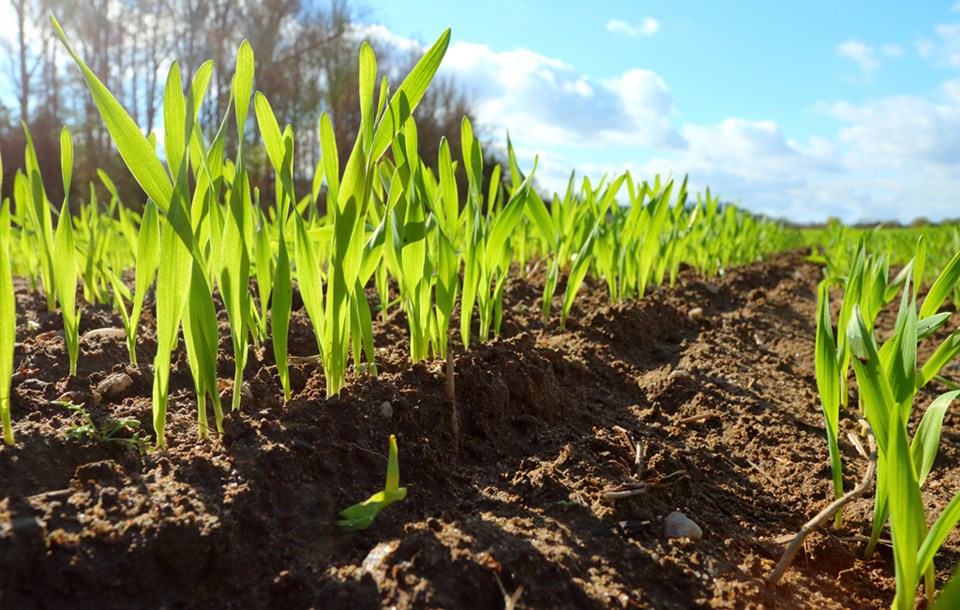NORTHWESTERN SASKATCHEWAN CROP REGION — Minimal rains meant many producers were able to get out and seed over the past week in the Northwestern Saskatchewan Crop Region. Ninety-three per cent of the crop has now been seeded in the region, up from 76 per cent last week and ahead of the five-year average (2017-2021) of 85 per cent. Some producers in the region need rain as their fields are very dry while others report they currently have adequate moisture for germination and pasture growth.
In the region, peas and lentil acres have been completed. Ninety-nine per cent of spring wheat, 92 per cent of flax, 91 per cent of canola, 87 per cent of barley, and 83 per cent of oats have been seeded.
No significant amounts of rain were received in the region this week, the Spiritwood area received the most with 22 mm, the Turtleford area 20 mm, the Meadow Lake area eight mm and the Lloydminster and Barthel areas four mm. Cropland topsoil moisture is rated as one per cent surplus, 63 per cent adequate, 31 per cent short and five per cent very short. Hay and pasture land topsoil moisture is rated as one per cent surplus, 52 per cent adequate, 32 per cent short and 15 per cent very short.
Most crops are in good condition to fair condition in the region. Cereals have been reported to be coming up nicely in many municipalities in the region. The crop damage this week that was reported was due to wind, flea beetles and light frosts. Producers are busy seeding green feed, spraying when possible, moving cattle to pasture and assessing pest populations.
Provincial Overview
Producers in the west are nearly wrapped up with seeding while many in the east are still behind due to rain delays and extremely wet fields.
Currently, 76 per cent of the crop acres in the province have been seeded, up from 52 per cent last week but still well behind the five-year average (2017-2021) of 93 per cent. Producers in the southeast and east central regions have reported that many low laying areas will go unseeded this year due to standing water.
Ninety-seven per cent of the crop is seeded in the southwest, 95 per cent in the west-central, 93 per cent in the northwest, 64 per cent per cent in the southeast, 60 per cent in the northeast and 50 per cent in the east-central region.
Provincially, 96 per cent of lentils and chickpeas, 93 per cent of field peas, 91 per cent of durum, 79 per cent of canary seed, 75 per cent of spring wheat, 69 per cent of barley, 66 per cent of canola, 65 per cent of flax and 51 per cent of oats have been seeded to date.
A large weather system covered much of the eastern part of the province this past week, resulting in significant amounts of rain for those regions. The Moosomin area received 92 mm, the Stoughton area 89 mm, the Bienfait area 65 mm and the Esterhazy area 42 mm. The west received some rain over the past week, but amounts were small, ranging from three mm to 12 mm.
Cropland topsoil moisture is rated as 16 per cent surplus, 56 per cent adequate, 19 per cent short and nine per cent very short. Hay and pasture land topsoil moisture is rated as seven per cent surplus, 60 per cent adequate, 19 per cent short and 14 per cent very short. Western regions are least favourable for moisture while more favourable conditions are reported in the east.
Crop conditions this week range from good to fair across the province. Emergence has been reported to be slow in areas of the southwest and west-central where moisture is lacking. In the southeast and east-central, however, emergence has been slow due to cool weather and an overabundance of moisture. Most crop damage this week was from flooding, drought, flea beetles and gophers.
Now that seeding has wrapped up for many producers, they are busying spraying in-crop herbicides, assessing germination and emergence, scouting for early season pests and moving cattle to pasture.






